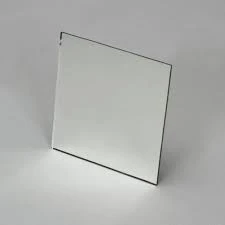

The Importance of Float Glass Tempering in Modern Construction
Float glass, known for its clarity and smooth finish, has become a staple material in modern architecture. Its unique production process involves floating molten glass on top of molten tin, resulting in a glass that is both uniform in thickness and free of distortions. However, while float glass serves as an excellent choice for windows and facades, its structural integrity can be significantly enhanced through tempering. This article explores the importance of float glass tempering and its pivotal role in contemporary construction.
The Importance of Float Glass Tempering in Modern Construction
One of the key benefits of tempered float glass is its safety characteristics. When broken, tempered glass shatters into small, blunt pieces rather than sharp shards, minimizing the risk of injury. This property is particularly vital in public spaces, where safety is paramount. Building codes in many regions now mandate the use of tempered glass in certain areas, such as doors, shower enclosures, and even facades, to ensure occupant safety.

In addition to safety, the durability of tempered float glass contributes to its favorability in construction. The strengthening process allows it to withstand extreme weather conditions, including high winds and substantial impacts. This makes it an ideal choice for glass facades and skylights, providing not only aesthetic appeal but also excellent performance in various climates.
Moreover, tempered float glass offers improved thermal efficiency. Its treatment allows for better resistance to temperature fluctuations, reducing the risk of thermal stress and potential breakage. This feature is particularly relevant in regions with drastic temperature changes, where untreated glass may crack due to rapid heating or cooling.
Architecturally, tempered float glass provides designers and builders with a versatile material that can be molded into various shapes and sizes. Its ability to be laminated or coated further enhances its performance, allowing for applications like sun control and energy efficiency. Architects often use tinted or reflective tempered glass to reduce glare and heat gain in buildings, thus contributing to sustainable construction practices.
In conclusion, float glass tempering is a critical aspect of modern construction that combines aesthetic appeal with enhanced safety and durability. As architects and builders continue to embrace innovative designs, the use of tempered float glass will undoubtedly play a significant role in shaping the skylines of tomorrow. Its versatility, strength, and safety features not only meet the demands of contemporary architecture but also contribute to sustainable and resilient building practices, ensuring a brighter future for urban landscapes.